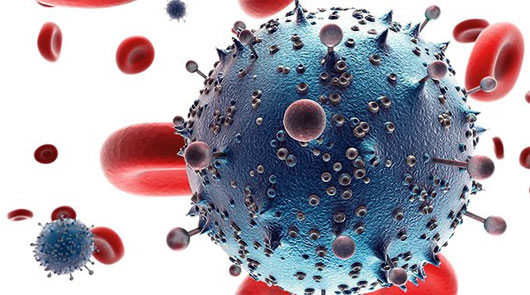Discovering new, more dangerous HIV strains in Russia
Russian scientists believe they have identified a new and more dangerous strain of HIV than the strains previously known.
HIV virus can now be separated into two main types: HIV-1 and HIV-2 . Among them, HIV-1 is more dangerous than the other, and is therefore the culprit of most cases of "century-old " viral infections in the world.
HIV-1 can also be divided into different subtypes, and the newly discovered strain called 02_AG / A is a subtype of HIV-1.

Photo: naslovi.net
All subtypes of HIV can spread from person to person through common ways such as sharing needles or having unsafe sex, but some strains are more easily spread than the rest.
According to the Moscow News site, scientists from Russia's National Center for Microbiology and Biotechnology (Vektor) have discovered the HIV strain 02_AG / A.
Natalya Gashnikova, head of the retrovirus department at the Vektor center, said 02_AG / A could spread in the population at a much faster rate than the main HIV strain found today in Russia.
The new virus was first recorded in Novosibirsk, Siberia, Russia in 2006, making the number of HIV-positive people in this city jump from 2,000 in 2007 to 15,000 in 2012. According to the Center Russian federal AIDS prevention, 50% of new cases caused by 02_AG / A.
The newly identified strain not only exists in Siberia, but also appears in Chechnya, southern Russia, Kyrgyzstan and Kazakhstan.
The United Nations estimates that the only regions with the highest number of HIV infections are Eastern Europe and Central Asia. 52% of PLHIV in this region currently reside in Russia.
The above situation is partly due to the weak awareness of HIV in many parts of Russia and because the country's schools offer less sex education to the curriculum.
- The mystery of alien strains is already on Earth
- The risk of rats carrying new pathogens and strains in New York
- American doctors are concerned about a new deadly fungal infection strain
- The US warns that the new
- Discovering strange creatures in Russia
- Sweat can kill the virus
- Fossils reveal the possibility of survival of new strains
- The appearance of TB strains is extremely dangerous
- Warning for new HIV strains
- Successful modulation of serum diagnosis of cholera strains 0139
- Treatment of polluted water with microorganisms
- Do not ignore strains of less toxic bird flu viruses
 Green tea cleans teeth better than mouthwash?
Green tea cleans teeth better than mouthwash? Death kiss: This is why you should not let anyone kiss your baby's lips
Death kiss: This is why you should not let anyone kiss your baby's lips What is salmonellosis?
What is salmonellosis? Caution should be exercised when using aloe vera through eating and drinking
Caution should be exercised when using aloe vera through eating and drinking